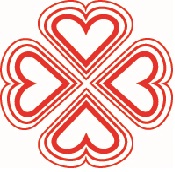Hypertensive crises
Keywords:
HYPERTENSION/complications, HYPERTENSION/drug therapy, WOMEN, HEADACHE/drug therapy, EMERGENCY SERVICE, HOSPITAL, ANGINA PECTORIS/drug therapy.Abstract
In order to characterize the patients with hypertensive crisis that attend the Emergency Department of the Institute of Cardiology and Cardiovascular Surgery an observational descriptive study was conducted among 128 consecutive patients with elevated readings and symptoms attributable to attack to a target organ. Of the 128 patients, 12 (9.3%) were emergencies and 86 (67%) were urgencies. The hypertensive crises were much more frequent in women than in men. 28 patients with crisis did not take any drug, 49 received only one drug and 17 had stopped the treatment through more than 3 mean excretory ducts. The patients went to the emergency department mostly in the morning and late in the afternoon. A signficant reduction of patients with crisis was observed during the evening. On Tuesdays and Wednesdays there were more crises than in the rest of the week. The commonest symptom on admission was precordial pain followed by headache. The most efficient drugs to obtain normotension were nifedipine and clonidine. Captopril was significantly less effective (p<0.05). Nifedipine had the relative risk of modifying the T wave of the EKG 12.3 times more (p<0.0001) than the rest of the drugs. Most of the patients with hypertensive crisis that receive medical attention at the Emergency Department of the Institute of Cardiology and Cardiovascular Surgery are urgencies that should be treated at the outpatient department. Emergencies appear with symptoms and signs attributable to an attack to a target organ and not to hypertension itself.Downloads
Downloads
Published
How to Cite
Issue
Section
License
Aquellos autores/as que tengan publicaciones con esta revista, aceptan los términos siguientes:- Los autores/as conservarán sus derechos de autor y garantizarán a la revista el derecho de primera publicación de su obra, el cuál estará simultáneamente sujeto a la Attribution-NonCommercial 4.0 Internacional (CC BY-NC 4.0) que permite a terceros compartir la obra siempre que se indique su autor y su primera publicación esta revista. o admite fines comerciales. Permite copiar, distribuir e incluir el artículo en un trabajo colectivo (por ejemplo, una antología), siempre y cuando no exista una finalidad comercial, no se altere ni modifique el artículo y se cite apropiadamente el trabajo original. El Comité Editorial se reserva el derecho de introducir modificaciones de estilo y/o acotar los textos que lo precisen, comprometiéndose a respectar el contenido original.
- Los autores/as podrán adoptar otros acuerdos de licencia no exclusiva de distribución de la versión de la obra publicada (p. ej.: depositarla en un archivo telemático institucional o publicarla en un volumen monográfico) siempre que se indique la publicación inicial en esta revista.
- Se permite y recomienda a los autores/as difundir su obra a través de Internet (p. ej.: en archivos telemáticos institucionales o en su página web) antes y durante el proceso de envío, lo cual puede producir intercambios interesantes y aumentar las citas de la obra publicada. (Véase El efecto del acceso abierto).








